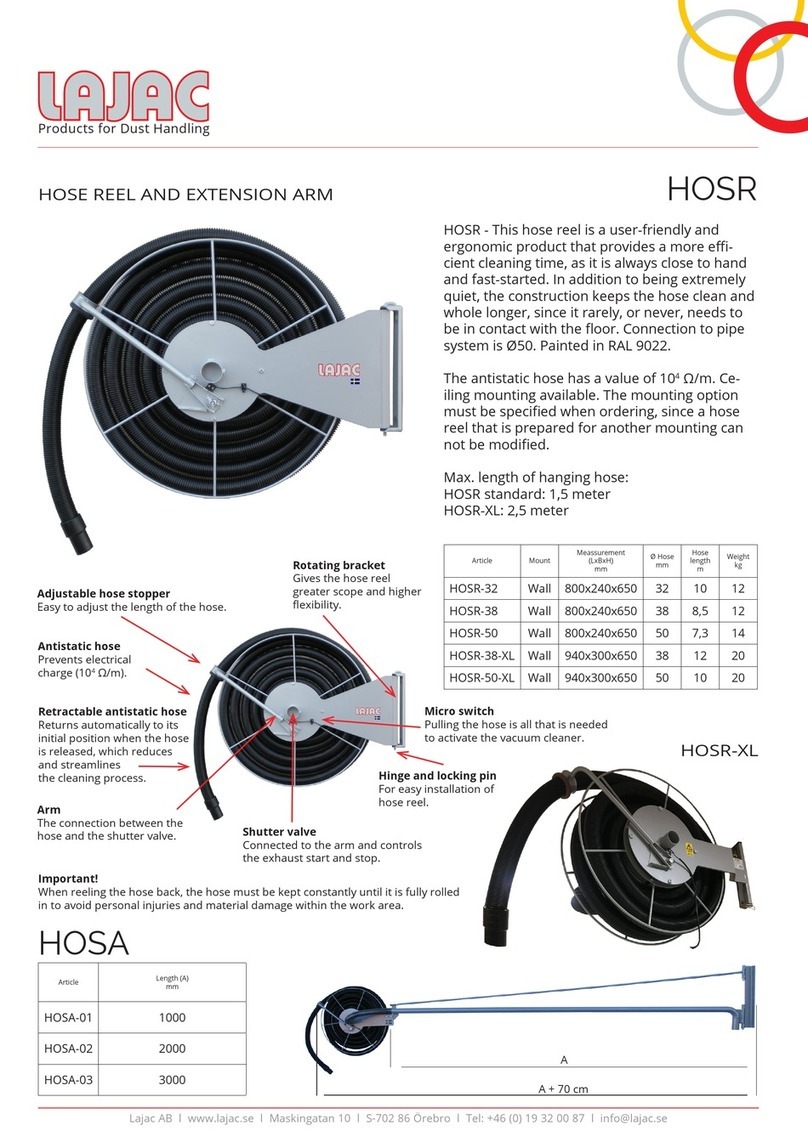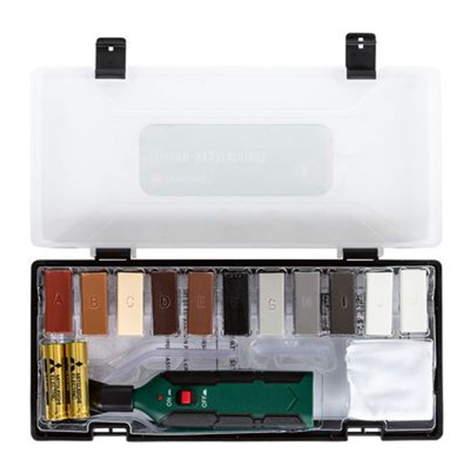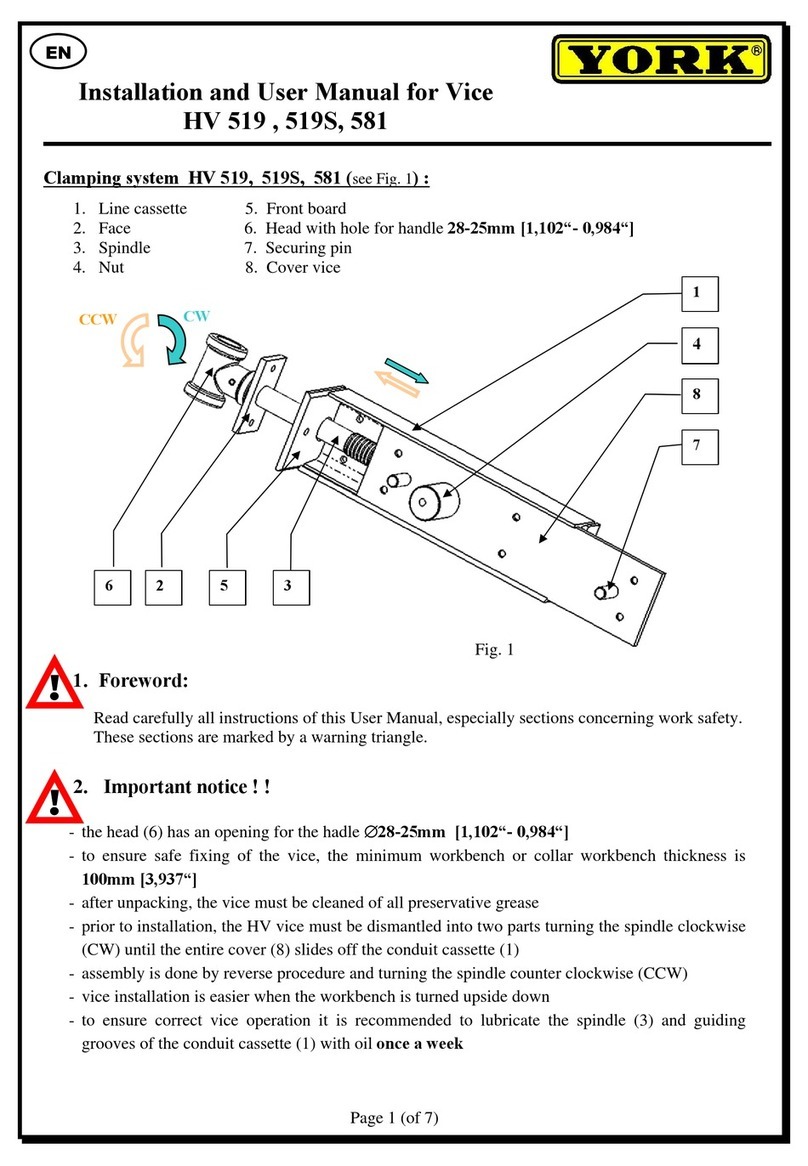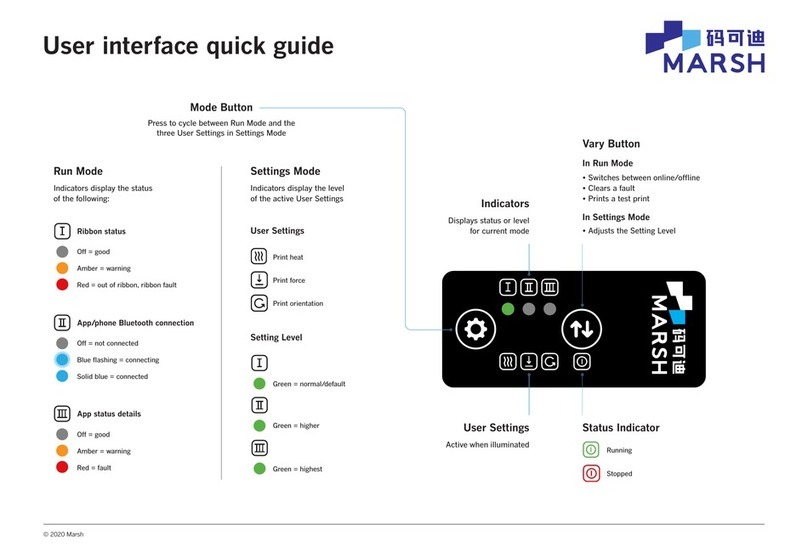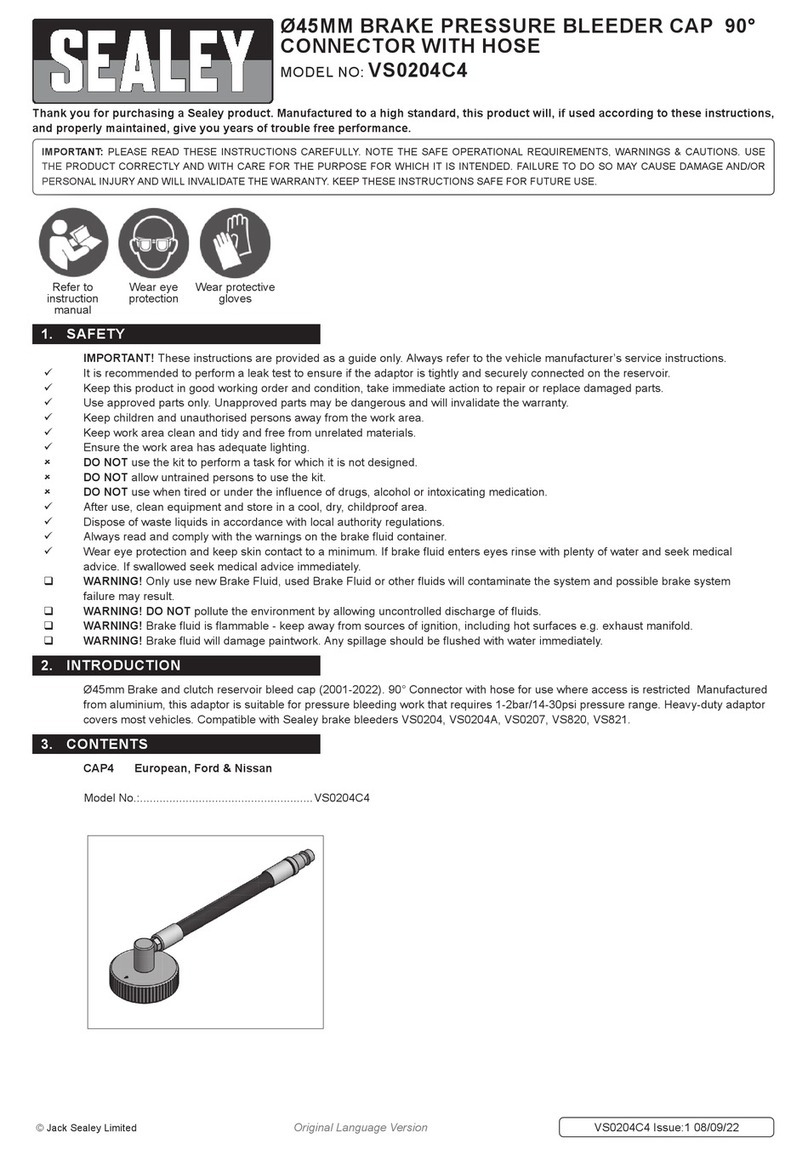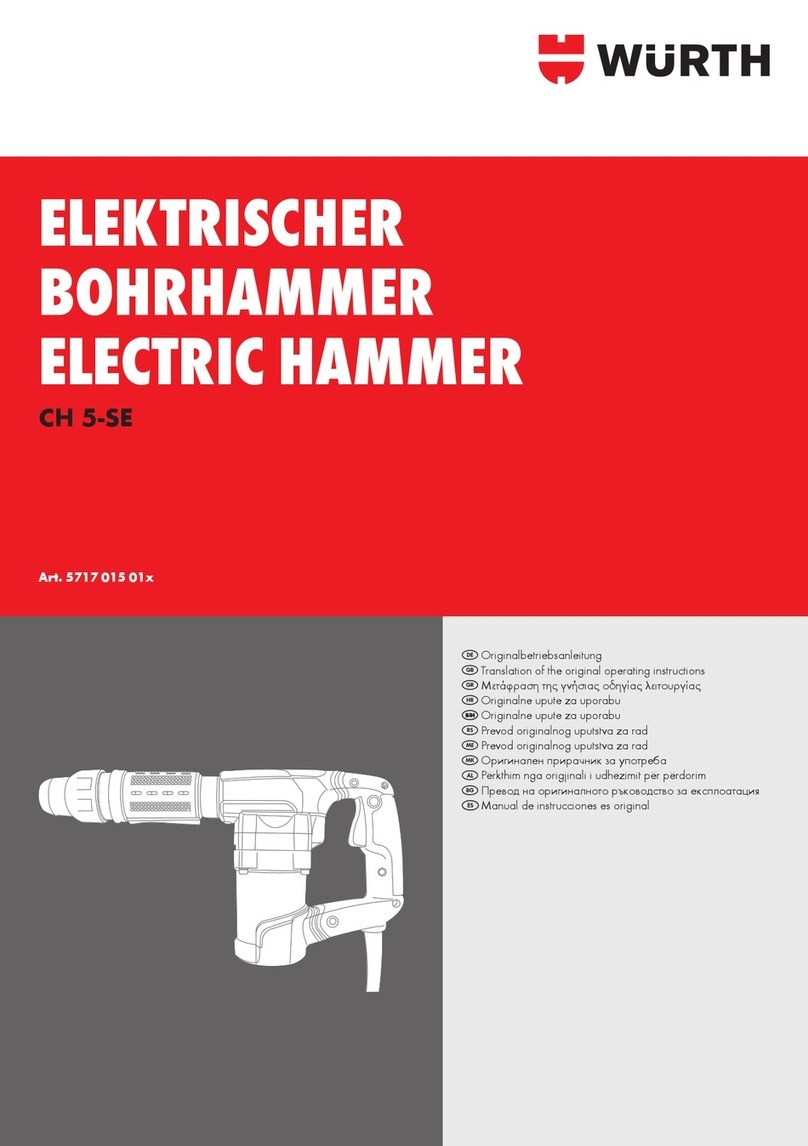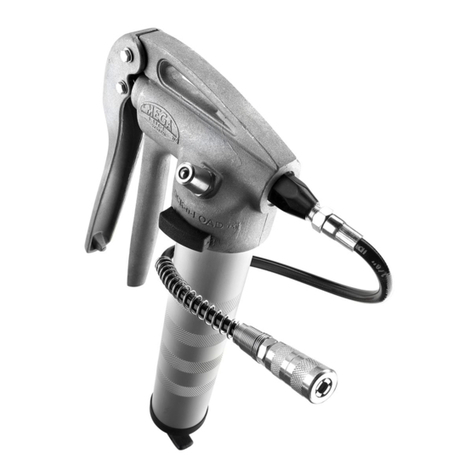CIRRUS DESIGN SR22 Quick setup guide

AIRPLANE INFORMATION MANUAL
for the
CIRRUS DESIGN SR22
Aircraft Serials 0002 and subs with Analog
or Avidyne Avionics System
• NOTE •
At the time of issuance, this Information Manual was harmo-
nized with the SR22 Pilot's Operating Handbook Rev A9 (P/N
13772-001), and will not be kept current. Therefore, this Infor-
mation Manual is for reference only and cannot be used as a
substitute for the official Pilot's Operating Handbook and FAA
Approved Airplane Flight Manual.
Information Manual
P/N 20880-001 March 2010

Copyright © 2010 - All Rights Reserved
Cirrus Design Corporation
4515 Taylor Circle
Duluth, MN 55811

Information Manual 1-1
Cirrus Design Section 1
SR22 General
Section 1
General
Table of Contents
Introduction .....................................................................................1-3
The Airplane....................................................................................1-6
Engine..........................................................................................1-6
Propeller ......................................................................................1-6
Fuel..............................................................................................1-6
Oil ...............................................................................................1-7
Maximum Certificated Weights....................................................1-7
Cabin and Entry Dimensions.......................................................1-7
Baggage Spaces and Entry Dimensions .....................................1-7
Specific Loadings.........................................................................1-7
Symbols, Abbreviations and Terminology.......................................1-8
General Airspeed Terminology and Symbols ..............................1-8
Meteorological Terminology.........................................................1-9
Engine Power Terminology........................................................1-10
Performance and Flight Planning Terminology..........................1-10
Weight and Balance Terminology..............................................1-11
March 2010

1-2 Information Manual
Section 1 Cirrus Design
General SR22
Intentionally Left Blank
March 2010

Information Manual 1-3
Cirrus Design Section 1
SR22 General
Introduction
This section contains information of general interest to pilots and
owners. You will find the information useful in acquainting yourself with
the airplane, as well as in loading, fueling, sheltering, and handling the
airplane during ground operations. Additionally, this section contains
definitions or explanations of symbols, abbreviations, and terminology
used throughout this handbook.
• Note •
For specific information regarding the organization of this
Handbook, revisions, supplements, and procedures to be
used to obtain revision service for this handbook, refer to the
“Foreword” immediately following the title page
March 2010

1-4 Information Manual
Section 1 Cirrus Design
General SR22
Figure 1-1
78 inches 3-BLADE
198 cm
38.3 ft
11.67 m
10.8 ft
3.29 m
7 inches
18 cm
26.0 ft
7.92 m
SR22_FM01_1371A
8.8 ft
2.70 m
NOTE:
• Wing
span
includes
position and strobe lights.
• Prop ground clearance at
3400 lb - 7" inches (18 cm).
• Wing Area = 144.9 sq. ft.
Airplane Three View
March 2010

Information Manual 1-5
Cirrus Design Section 1
SR22 General
10.8 ft. (3.30 m)
0.5 ft. (.15 m)
24.8 ft. (7.54 m)
7.0 ft. (2.16 m)
-RADIUS FOR NOSE GEAR
-RADIUS FOR OUTSIDE GEAR
-RADIUS FOR INSIDE GEAR
-RADIUS FOR WING TIP
PARTIAL POWER. ACTUAL TURNING RADIUS MAY VARY AS
MUCH AS THREE FEET.
TURNING RADII ARE CALCULATED USING ONE BRAKE AND
GROUND TURNING CLEARANCE
SR22_FM01_1370
Figure 1-2
Turning Radius
March 2010

1-6 Information Manual
Section 1 Cirrus Design
General SR22
The Airplane
Engine
Number of Engines..............................................................................1
Number of Cylinders............................................................................6
Engine Manufacturer ........................................... Teledyne Continental
Engine Model..........................................................................IO-550-N
Fuel Metering.................................................................... Fuel Injected
Engine Cooling.....................................................................Air Cooled
Engine Type....................................Horizontally Opposed, Direct Drive
Horsepower Rating................................................310 hp @ 2700 rpm
Propeller
Hartzell
Propeller Type........................................ Constant Speed, Three Blade
Model Number..............................................PHC-J3YF-1RF/F7694(B)
Diameter.............................................................78.0” (76.0” Minimum)
Model Number.........................................PHC-J3YF-1RF/F7693DF(B)
Diameter............................................................ 78.0" (76.0" Minimum)
or
McCauley
Propeller Type........................................ Constant Speed, Three Blade
Model Number....................................................D3A34C443/78CYA-0
Diameter............................................................ 78.0" (76.0" Minimum)
or
MT Propeller
Propeller Type........................................ Constant Speed, Three Blade
Model Number............................................................ MTV-9-D/198-52
Diameter............................................................ 78.0" (76.0" Minimum)
March 2010

Information Manual 1-7
Cirrus Design Section 1
SR22 General
Fuel
Total Capacity.............................................84.0 U.S. Gallons (318.0 L)
Total Usable................................................81.0 U.S. Gallons (306.6 L)
Approved Fuel Grades:
100 LL Grade Aviation Fuel (Blue)
100 (Formerly 100/130) Grade Aviation Fuel (Green)
Oil
Oil Capacity (Sump).............................................8 U.S. Quarts (7.6 L)
Oil Grades:
All Temperatures ............................ SAE 15W-50, 20W-50, or 20W-60
Below 40 F (4C).....................................................................SAE 30
Above 40 F (4C) ....................................................................SAE 50
Maximum Certificated Weights
Maximum Gross for Takeoff...................................... 3400 lb (1542 Kg)
Maximum Baggage Compartment Loading.................... 130 lb (59 Kg)
Standard Empty Weight ........................................... 2250 lb (1021 Kg)
Maximum Useful Load................................................ 1150 lb (522 Kg)
Full Fuel Payload.......................................................... 676 lb (307 Kg)
Cabin and Entry Dimensions
Dimensions of the cabin interior and entry door openings are
illustrated in detail in Section 6.
Baggage Spaces and Entry Dimensions
Dimensions of the baggage area and baggage door opening are
illustrated in detail in Section 6.
Specific Loadings
Wing Loading ....................................................23.5 lb per square foot
Power Loading.................................................................11.0 lb per hp
March 2010

1-8 Information Manual
Section 1 Cirrus Design
General SR22
Symbols, Abbreviations and Terminology
General Airspeed Terminology and Symbols
KCAS Knots Calibrated Airspeed is the indicated airspeed
corrected for position and instrument error. Calibrated
airspeed is equal to true airspeed in standard atmosphere at
sea level.
KIAS Knots Indicated Airspeed is the speed shown on the
airspeed indicator. The IAS values published in this
handbook assume no instrument error.
KTAS Knots True Airspeed is the airspeed expressed in knots
relative to undisturbed air which is KCAS corrected for
altitude and temperature.
VGBest Glide Speed is the speed at which the greatest flight
distance is attained per unit of altitude lost with power off.
VOOperating Maneuvering Speed is the maximum speed at
which application of full control movement will not overstress
the airplane.
VFE Maximum Flap Extended Speed is the highest speed
permissible with wing flaps in a prescribed extended position.
VNO Maximum Structural Cruising Speed is the speed that
should not be exceeded except in smooth air, and then only
with caution.
VNE Never Exceed Speed is the speed that may not be exceeded
at any time.
VPD Maximum Demonstrated Parachute Deployment Speed is
the maximum speed at which parachute deployment has
been demonstrated.
VSStalling Speed is minimum steady flight speed at which the
aircraft is controllable.
VS50% Stalling Speed is minimum steady flight speed at which the
aircraft is controllable with 50% flaps.
March 2010

Information Manual 1-9
Cirrus Design Section 1
SR22 General
Meteorological Terminology
VSO Stalling Speed is the minimum steady flight speed at which
the aircraft is controllable in the landing configuration (100%
flaps) at the most unfavorable weight and balance.
VXBest Angle of Climb Speed is the speed at which the
airplane will obtain the highest altitude in a given horizontal
distance. The best angle-of-climb speed normally increases
slightly with altitude.
VYBest Rate of Climb Speed is the speed at which the
airplane will obtain the maximum increase in altitude per unit
of time. The best rate-of-climb speed decreases slightly with
altitude.
IMC Instrument Meteorological Conditions are meteorological
conditions expressed in terms of visibility, distance from
cloud, and ceiling less than the minima for visual flight
defined in FAR 91.155.
ISA International Standard Atmosphere (standard day) is an
atmosphere where (1) the air is a dry perfect gas, (2) the
temperature at sea level is 15C, (3) the pressure at sea
level is 29.92 in.Hg (1013.2 millibars), and (4) the
temperature gradient from sea level to the altitude at which
the temperature is -56.5C is -0.00198C per foot and zero
above that altitude.
MSL Mean Sea Level is the average height of the surface of the
sea for all stages of tide. In this Handbook, altitude given as
MSL is the altitude above the mean sea level. It is the
altitude read from the altimeter when the altimeter’s
barometric adjustment has been set to the altimeter setting
obtained from ground meteorological sources.
OAT Outside Air Temperature is the free air static temperature
obtained from inflight temperature indications or from ground
meteorological sources. It is expressed in either degrees
Celsius or degrees Fahrenheit.
March 2010

1-10 Information Manual
Section 1 Cirrus Design
General SR22
Engine Power Terminology
Performance and Flight Planning Terminology
• Pressure Altitude is the altitude read from the altimeter
when the altimeter’s barometric adjustment has been set to
29.92 in.Hg (1013 mb) corrected for position and instrument
error. In this Handbook, altimeter instrument errors are
assumed to be zero.
• Standard Temperature is the temperature that would be
found at a given pressure altitude in the standard
atmosphere. It is 15° C (59° F) at sea level pressure altitude
and decreases approximately 2° C (3.6° F) for each 1000
feet of altitude increase. See ISA definition.
HP Horsepower is the power developed by the engine.
MCP Maximum Continuous Power is the maximum power that
can be used continuously.
MAP Manifold Pressure is the pressure measured in the
engine’s induction system expressed as in. Hg.
RPM Revolutions Per Minute is engine rotational speed.
• Static RPM is RPM attained during a full-throttle engine
runup when the airplane is on the ground and stationary.
gOne“g” is a quantity of acceleration equal to that of earth’s
gravity.
• Demonstrated Crosswind Velocity is the velocity of the
crosswind component for which adequate control of the
airplane during taxi, takeoff, and landing was actually
demonstrated during certification testing. Demonstrated
crosswind is not considered to be limiting.
• Service Ceiling is the maximum altitude at which the
aircraft at maximum weight has the capability of climbing at
a rate of 100 feet per minute.
GPH Gallons Per Hour is the amount of fuel (in gallons)
consumed by the aircraft per hour.
March 2010

Information Manual 1-11
Cirrus Design Section 1
SR22 General
Weight and Balance Terminology
NMPG Nautical Miles Per Gallon is the distance (in nautical miles)
which can be expected per gallon of fuel consumed at a
specific engine power setting and/or flight configuration.
• Unusable Fuel is the quantity of fuel that cannot be safely
used in flight.
• Usable Fuel is the fuel available for flight planning.
c.g. Center of Gravity is the point at which an airplane would
balance if suspended. Its distance from the reference datum
is found by dividing the total moment by the total weight of
the airplane.
•Armis the horizontal distance from the reference datum to
the center of gravity (c.g.) of an item. The airplane’s arm is
obtained by adding the airplane’s individual moments and
dividing the sum by the total weight.
• Basic Empty Weight is the actual weight of the airplane
including all operating equipment that has a fixed location in
the airplane. The basic empty weight includes the weight of
unusable fuel and full oil.
MAC Mean Aerodynamic Chord is the chord drawn through the
centroid of the wing plan area.
LEMAC Leading Edge of Mean Aerodynamic Chord is the forward
edge of MAC given in inches aft of the reference datum
(fuselage station).
• Maximum Gross Weight is the maximum permissible
weight of the airplane and its contents as listed in the aircraft
specifications.
•Momentis the product of the weight of an item multiplied by
its arm.
•UsefulLoadis the basic empty weight subtracted from the
maximum weight of the aircraft. It is the maximum allowable
combined weight of pilot, passengers, fuel and baggage.
March 2010

1-12 Information Manual
Section 1 Cirrus Design
General SR22
• Station is a location along the airplane fuselage measured
in inches from the reference datum and expressed as a
number. For example: A point 123 inches aft of the reference
datum is Fuselage Station 123.0 (FS 123).
• Reference Datum is an imaginary vertical plane from which
all horizontal distances are measured for balance purposes.
•Tareis the weight of all items used to hold or position the
airplane on the scales for weighing. Tare includes blocks,
shims, and chocks. Tare weight must be subtracted from the
associated scale reading.
March 2010

Information Manual 2-1
Cirrus Design Section 2
SR22 Limitations
Section 2
Limitations
Table of Contents
Introduction .....................................................................................2-3
Certification Status..........................................................................2-3
Airspeed Limitations........................................................................2-4
Airspeed Indicator Markings ...........................................................2-5
Power Plant Limitations ..................................................................2-6
Engine..........................................................................................2-6
Propeller ......................................................................................2-7
Weight Limits ..................................................................................2-7
Instrument Markings .......................................................................2-8
Center of Gravity Limits ..................................................................2-9
Maneuver Limits............................................................................2-10
Flight Load Factor Limits...............................................................2-10
Minimum Flight Crew ....................................................................2-10
Kinds of Operation ........................................................................2-11
Kinds of Operation Equipment List............................................2-11
Icing...........................................................................................2-15
Runway Surface ........................................................................2-15
Taxi Power.................................................................................2-16
Fuel Limits.....................................................................................2-16
Altitude Limits................................................................................2-16
Environmental Conditions.............................................................2-16
Maximum Occupancy ...................................................................2-16
Systems and Equipment Limits.....................................................2-17
Cirrus Airframe Parachute System (CAPS)...............................2-17
Primary Flight Display................................................................2-17
Multi-Function Display ...............................................................2-19
Oxygen System .........................................................................2-20
Inflatable Restraint System........................................................2-20
Flap Limitations..........................................................................2-20
Paint...........................................................................................2-20
Other Limitations...........................................................................2-20
Smoking.....................................................................................2-20
Placards........................................................................................2-21
March 2010

2-2 Information Manual
Section 2 Cirrus Design
Limitations SR22
Intentionally Left Blank
March 2010

Information Manual 2-3
Cirrus Design Section 2
SR22 Limitations
Introduction
• Note •
Limitations associated with optional equipment are not
described in this section. For optional equipment limitations,
refer to Section 9, Supplements
The limitations included in this Section of the Pilot’s Operating
Handbook (POH) are approved by the Federal Aviation Administration.
This section provides operating limitations, instrument markings and
basic placards required by regulation and necessary for the safe
operation of the SR22 and its standard systems and equipment. Refer
to Section 9 of this handbook for amended operating limitations for
airplanes equipped with optional equipment.Compliance with the
operating limitations in this section and in Section 9 is required by
Federal Aviation Regulations.
Certification Status
The Cirrus SR22 is certificated under the requirements of Federal
Aviation Regulations (FAR) Part 23 as documented by FAA Type
Certificate TC A00009CH.
March 2010

2-4 Information Manual
Section 2 Cirrus Design
Limitations SR22
Figure 2-1
Airspeed Limitations
The indicated airspeeds in the following table are based upon Section
5 Airspeed Calibrations using the normal static source. When using
the alternate static source, allow for the airspeed calibration variations
between the normal and alternate static sources.
Speed KIAS KCAS Remarks
VNE 201 204 Never Exceed Speed is the speed limit
that may not be exceeded at any time.
VNO 178 180 Maximum Structural Cruising Speed is
the speed that should not be exceeded
except in smooth air, and then only with
caution.
VO
3400 Lb 133 135 Operating Maneuvering Speed is the
maximum speed at which full control
travel may be used. Below this speed the
airplane stalls before limit loads are
reached. Above this speed, full control
movements can damage the airplane.
VFE
50% Flaps
100% Flaps 119
104 120
104
Maximum Flap Extended Speed is the
highest speed permissible with wing
flaps extended.
VPD 133 135 Maximum Demonstrated Parachute
Deployment Speed is the maximum
speed at which parachute deployment
has been demonstrated.
Airspeed Limits
March 2010

Information Manual 2-5
Cirrus Design Section 2
SR22 Limitations
Airspeed Indicator Markings
The airspeed indicator markings are based upon Section 5 Airspeed
Calibrations using the normal static source. When using the alternate
static source, allow for the airspeed calibration variations between the
normal and alternate static sources.
Marking Value
(KIAS) Remarks
White
Arc 59 - 104 Full Flap Operating Range. Lower limit is the most
adverse stall speed in the landing configuration.
Upper limit is the maximum speed permissible with
flaps extended.
Green
Arc 70 - 178 Normal Operating Range. Lower limit is the
maximum weight stall at most forward C.G. with
flaps retracted. Upper limit is the maximum structural
cruising speed.
Yellow
Arc 178 - 201 Caution Range. Operations must be conducted with
caution and only in smooth air.
Red Line 201 Never exceed speed. Maximum speed for all
operations.
Figure 2-2
Airspeed Indicator Markings
March 2010

2-6 Information Manual
Section 2 Cirrus Design
Limitations SR22
Power Plant Limitations
Engine
Teledyne Continental..............................................................IO-550-N
Power Rating .......................................................310 hp @ 2700 RPM
Maximum RPM.....................................................................2700 RPM
Oil: Oil Temperature..................................... 240F (115C) maximum
Oil Pressure:
Minimum................................................................................ 10 psi
Maximum............................................................................. 100 psi
Approved Oils:
Engine Break-In: For first 25 hours of operation or until oil
consumption stabilizes use straight mineral oil conforming to MIL-
L-6082. If engine oil must be added to the factory installed oil, add
only MIL-L-6082 straight mineral oil.
After Engine Break-In: Use only oils conforming to Teledyne
Continental Specification MHS-24 (Ashless Dispersant Lubrication
Oil) or MHS-25 (Synthetic Lubrication Oil). Refer to Section 8 - Oil
Servicing. Oil viscosity range as follows:
All Temperatures ............................... 15W-50, 20W-50 or 20W-60
Above 40°F (4°C).................................SAE 50, 20W50, or 20W60
Below 40°F (4°C)................... SAE 30, 10W30, 15W50, or 20W50
Fuel Grade................Aviation Grade 100 LL (Blue) or 100 (green)
• Note •
Refer to General Limitations – Fuel Limits in this section for
operational limitations regarding fuel and fuel storage.
March 2010
Table of contents
Popular Tools manuals by other brands

Utility Solutions
Utility Solutions BREAK-SAFE 600 FIELD INSPECTION PROCEDURE
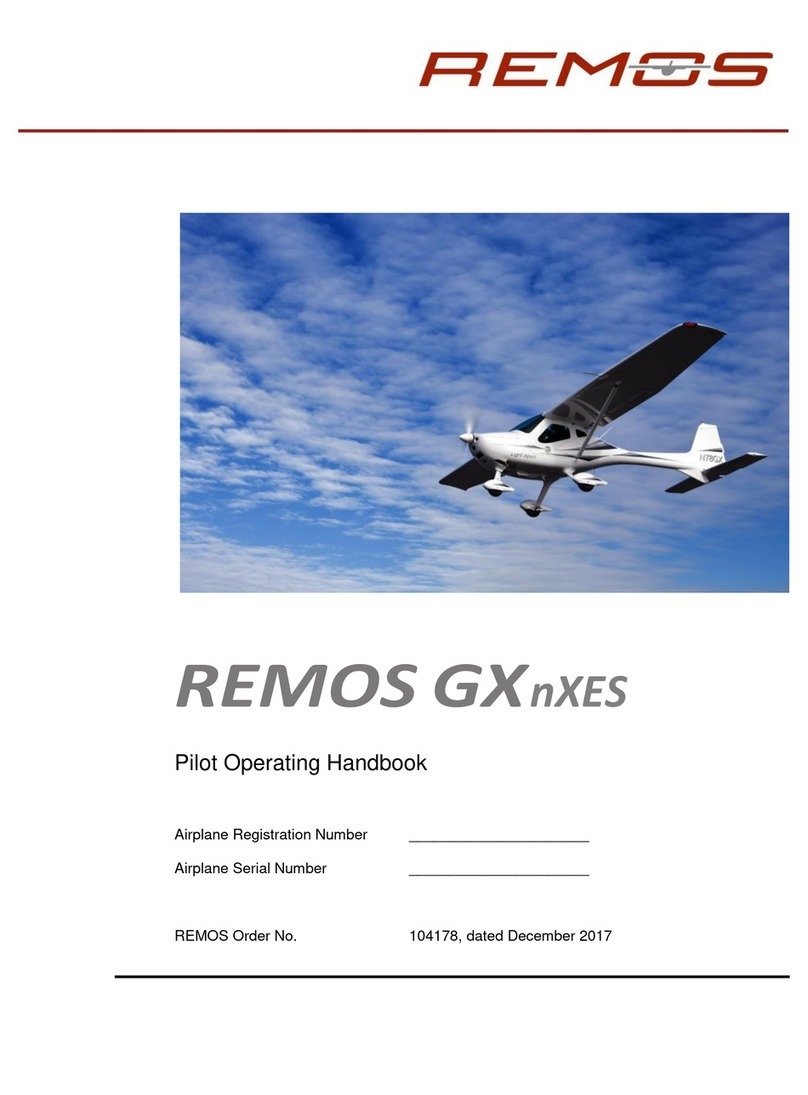
Remos
Remos REMOS GX nXES Pilot operating handbook
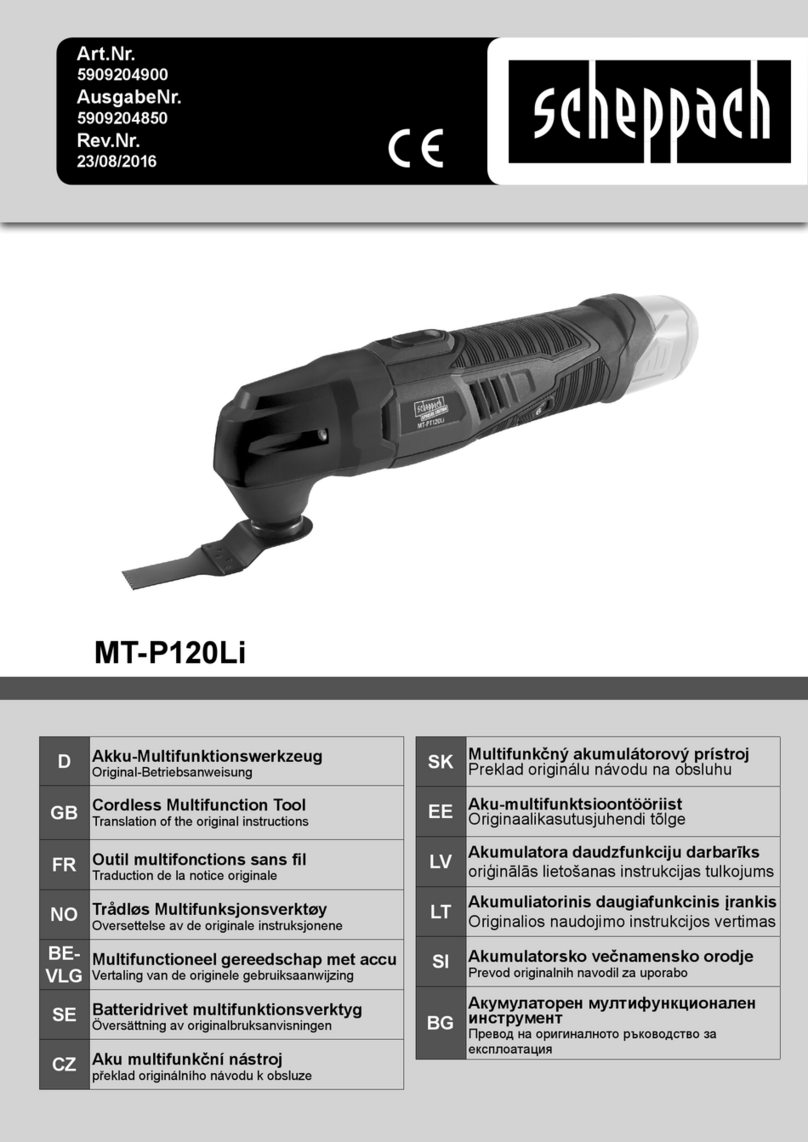
Scheppach
Scheppach MT-P120Li Original instructions

Porter-Cable
Porter-Cable 4212 instruction manual
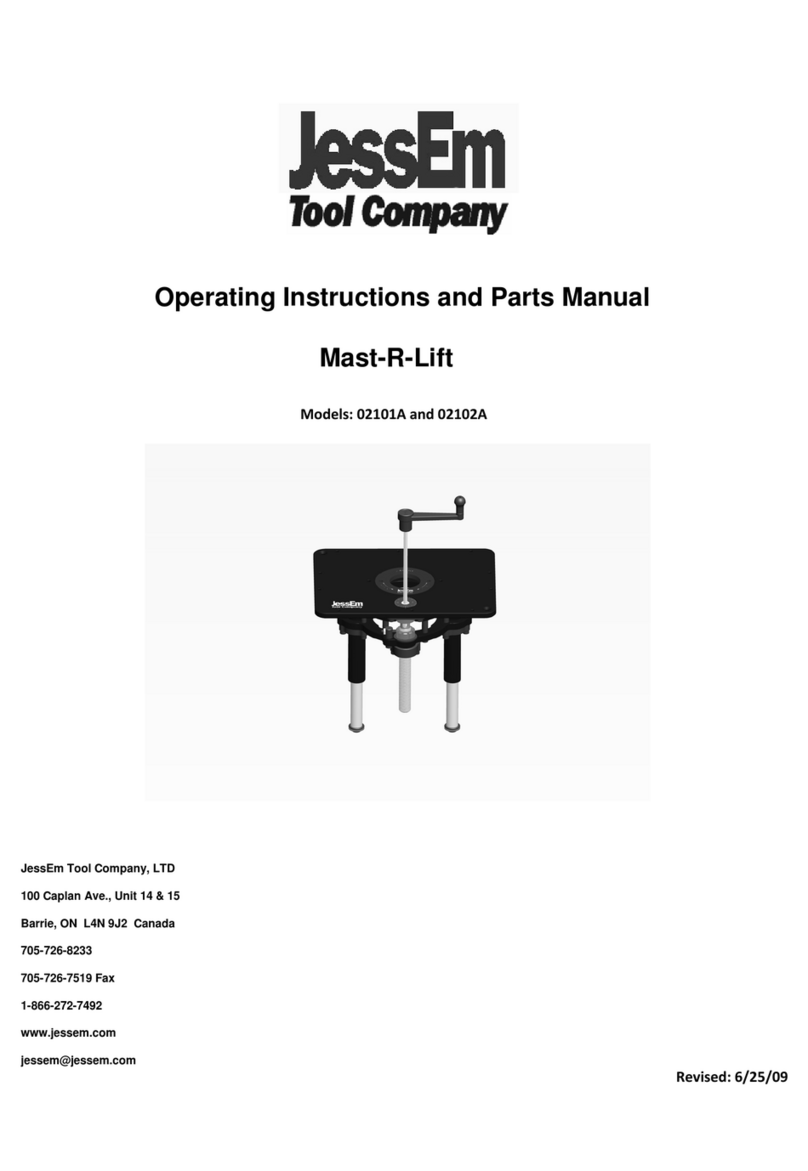
JessEm Tool
JessEm Tool 02101A Operating instructions and parts manual

Haussmann Xpert
Haussmann Xpert PNT114-B-175 manual
